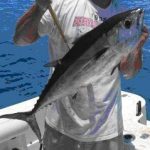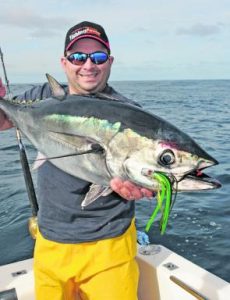How to Catch Tuna
Before you ever step into the boat, read how to catch tuna. The secrets found within its pages can save you hundreds, if not thousands, of dollars. If you are sick of buying your fish from the supermarket (YUCK), you owe it to yourself to check it out!
Searching for tuna can be an exciting adventure. It can also be extremely frustrating unless you know what you are looking for. In the summer months you will have an easier time finding schools of tuna. Typically, they will stay near the surface of the water while hunting for schools of bait fish. In the winter months, tuna tend to hunt deeper and rarely venture up to the surface. Additionally, tuna fishing is usually better in low light conditions, such as those in the late afternoon.
When fishing for tuna always be on the lookout for diving birds. Tuna tend to travel near pods of dolphins or sharks. If you see either birds, dolphins or sharks try and determine if any bait fish are in the area.
Typically, anglers prefer to troll using a W. This simple pattern consists of 2 long lines attached to each outrigger, 2 lines held relatively flat and out to the side and one line that goes straight down the middle just below the surface. The goal is to present a bold presentation of varying lures. Try and create the illusion of panic stricken schools of bait fish. Green lures are particularly alluring to yellow fin tuna for some reason.
Pick a lure. Most tuna lures have a Kona head, but they come in many shapes, sizes and colors and under many names. The Kona head creates an ideal bubble trail and surface action for attracting tuna. Generally the larger the lure, the larger the fish you will catch, but of course there are always exceptions to the rules. You never know what size and type of fish will hit your next lure. For smaller tuna, Albacore and Striped, 6inch lures of any type in green/yellow, blue/silver and red/white I have found to be most successful. The next step up would include 8-10inch lures aimed at catching Bluefin, Yellowfin and Albacore Tuna. One popular Yellowfin lure that catches well is the Pakula Lumo Small Spocket. White Bluefin are readily caught on pink, brown and purple colour combination’s. If you are after large Yellowfin Tuna or Striped Marlin in particular I have caught well on darker lures in combination’s of blue, black and purple, but they tend to go for pink as well. As with all fish there are no hard and fast rules. If you are not succeeding, change your lure position, colour or alter your speed until you find the right mix. Undoubtedly you will discover the joys of game fishing.
Try trolling at slow speeds (5-9 mph) using either live bait or artificial lures, such as strip baits, large spoons, skirted lures, and plugs. Don’t worry the tuna are more than fast enough to keep up with the boat. When you troll, you should let out a quarter of your line behind the boat; a hundred yards or more is excellent.
When tuna hit, they hit hard, usually hooking themselves with no help from you, and yanking the line off the reel at a rapid rate. If the line becomes slack, the fish is probably swimming toward the boat; reel in the slack rapidly, and make sure the hook is set. Always keep the line tight. A truly large fish might give you the fight of your life, battling for as long as several hours before it wins by snapping the line or leader or you do, by getting it up to the boat. I am a keen fisherman, who loves to watch, read, and do just about everything fishing. Hoping to learn lots of tricks from my how to catch tuna website
 Penn Tuna Fishing Rod & Reel Combo
Penn Tuna Fishing Rod & Reel Combo Fishing Pliers and Knife Combo
Fishing Pliers and Knife Combo View Best Tuna Fishing Lures
View Best Tuna Fishing Lures Cedar Plugs Tuna Fishing Lures
Cedar Plugs Tuna Fishing Lures Blue Fly Fish Saltwater Trolling Fishing Lures
Blue Fly Fish Saltwater Trolling Fishing Lures Saltwater Trolling Lure for Tuna
Saltwater Trolling Lure for Tuna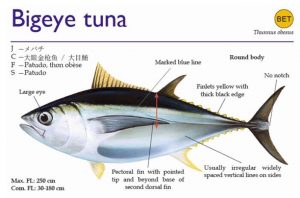
 Rigged Trolling Flexi Spreader Bar Topwater
Rigged Trolling Flexi Spreader Bar Topwater 36″ Skipjack Hybrid UV 8″ Blue & Pink Mackerel Baits
36″ Skipjack Hybrid UV 8″ Blue & Pink Mackerel Baits Mini Spreader Bar
Mini Spreader Bar Big Eye Rocket 9″
Big Eye Rocket 9″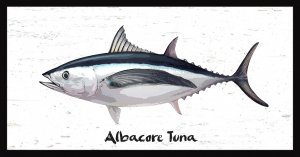
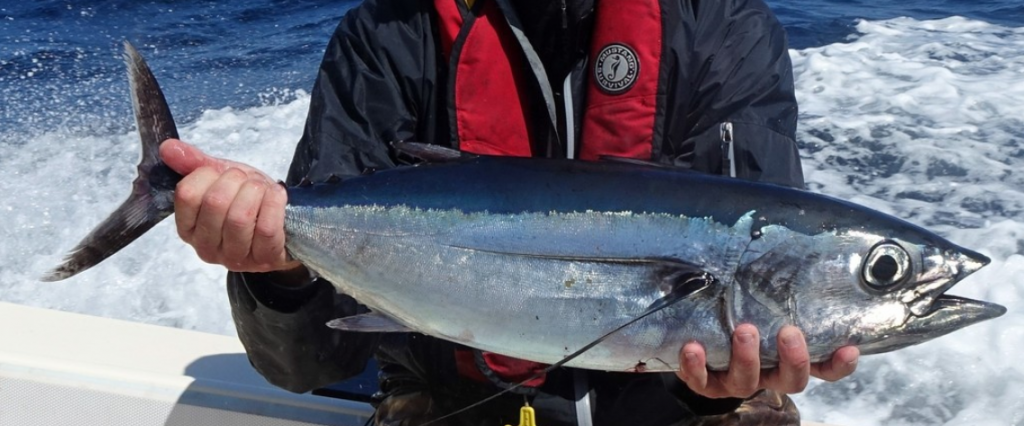

 Stainless Steel Fishing Leaders
Stainless Steel Fishing Leaders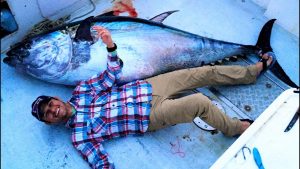
 Tuna Fishing Shirt
Tuna Fishing Shirt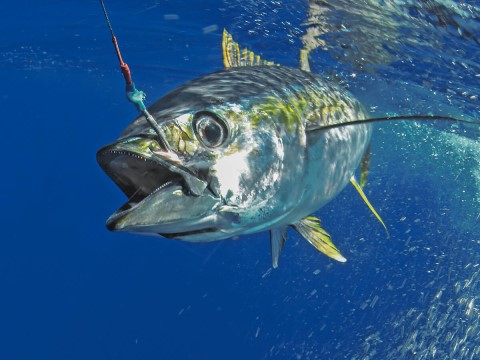
 Fishing Rod Holder
Fishing Rod Holder Lures Bait Rig Or Hooks
Lures Bait Rig Or Hooks Chum Bag
Chum Bag  Fishing Bait Bag
Fishing Bait Bag 3pcs Bait Bag Chum Bucket
3pcs Bait Bag Chum Bucket